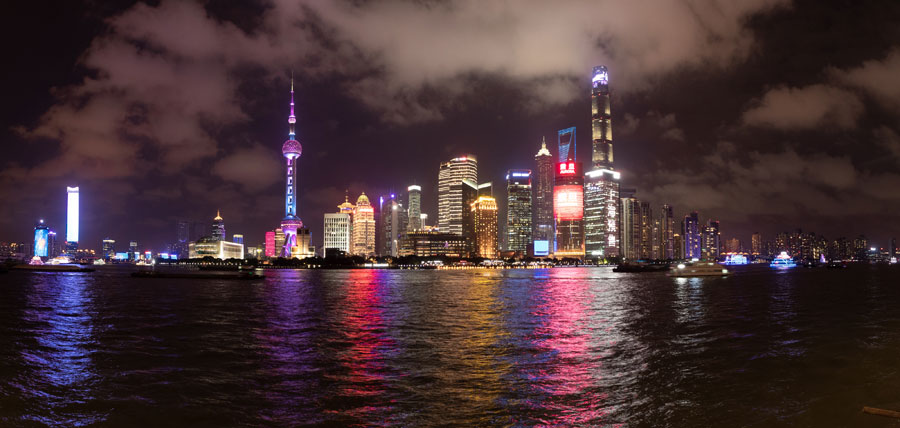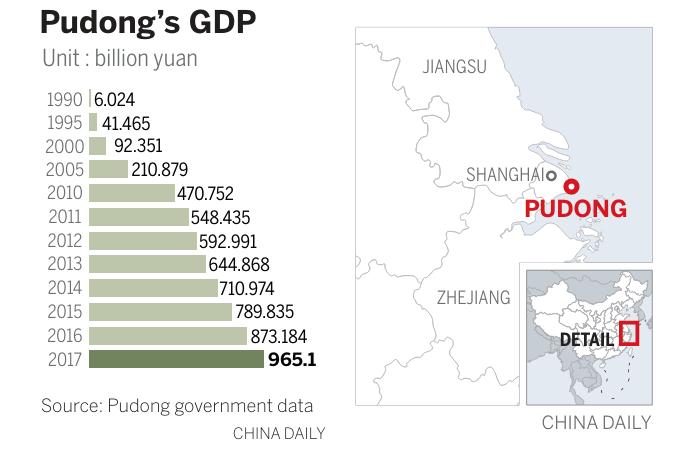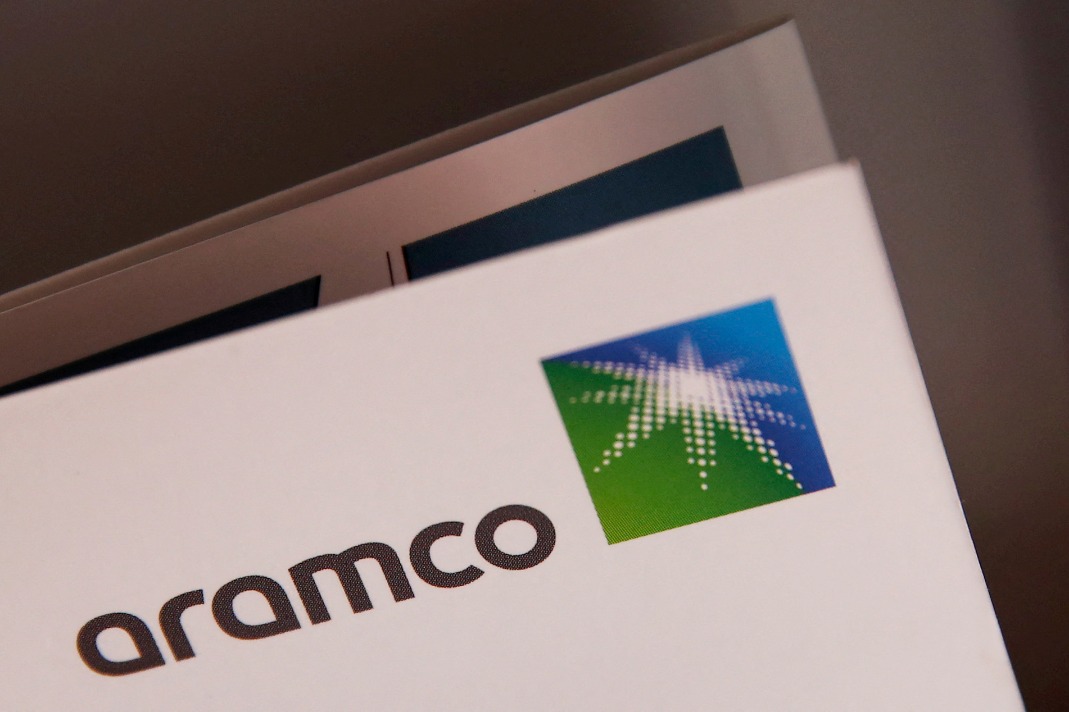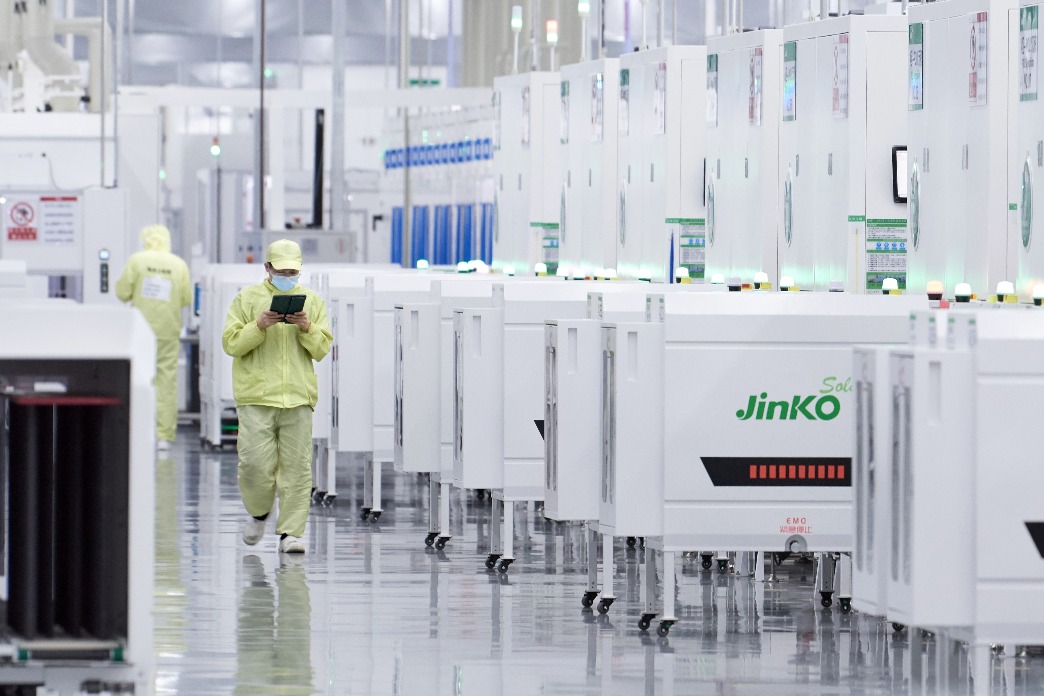How Pudong rose from the shadows


Once seen as the poor relation of Puxi, the Shanghai district quickly grew into a financial powerhouse
Pudong - literally "east of Huangpu River" - is Shanghai's growth engine and a shining symbol of China's modernization. Yet 40 years ago, when the nation launched reform and opening-up, the area was mostly farmland.
Although only a short hop across the river, locals had little interest in Pudong as it was far less developed than Puxi, which was already a thriving industrial center.
That all changed in April 1990, when the State Council, China's Cabinet, announced plans to develop Pudong into a dynamic new area. Today, the district accounts for 20 percent of the city's land, 25 percent of its population and a third of its GDP, according to official data.
Pudong New Area's GDP reached 965.1 billion yuan ($139.36 billion) last year - up from 6 billion yuan in 1990 - while its per capita disposable income was 60,715 yuan, higher than Shanghai's average of 58,988 yuan.
Weng Zuliang, the district's Party secretary, said the rapid development from boondocks to boomtown can be divided into three stages.
The initial stage, he said, ran from 1990 to 2000, when Pudong witnessed many firsts: the first finance and trading zone, the first export processing zone, the first bonded area, the first foreign-funded bank, and the first foreign-invested insurance company.

Jin Liwang, a photographer who lived in Shanghai between 1996 and 2006, recalled that most of the high-rises that now fill Pudong's skyline did not exist when he first arrived at Shanghai's Shiliupu Wharf.
"When I was accepted as an undergraduate student at Fudan University, 22 years ago, I had to take an overnight boat to Shanghai from Ningbo, Zhejiang province," he said, adding that in the early 2000s, the city's busy deep-water Yangshan Port was still just a shoal for fishermen.
The former mud flat now boasts the world's largest automated container terminal, with a designed capacity of 6.3 million twenty-foot equivalent units, or TEUs, the standard container measurement. It forms part of Shanghai Port, the world's largest container port.
Weng said the second development stage was between 2000 and 2012. During that time, Pudong seized the opportunities that arose from China's ascension to the World Trade Organization in 2001 and hosted the 2010 World Expo.
The district entered a third period of opening-up and innovation-driven development in 2013 when it launched China's first free trade zone, which aimed to build Shanghai into an international center for finance, shipping, trade and technological innovation, the Party chief said.
Since the China (Shanghai) Pilot Free Trade Zone was expanded in April 2015, the Lujiazui financial area in Pudong has seen fruitful results in opening the nation's finance sector to the world.
Jiang Tai Reinsurance Brokers was founded there in December 2015. In addition to being China's first reinsurance company, it was also the first financial institution to obtain a business license before applying for an operating permit thanks to government efforts to cut red tape.
Lujiazui is home to Shengang Securities, founded in 2016, the first stock brokerage joint venture between the mainland and Hong Kong; COSCO Shipping Captive Insurance, the country's first shipping insurance company, launched in 2017; and China's first wholly foreign-owned nonprofit vocational training institute, established in 2016 by global professional service provider PricewaterhouseCoopers.
After central regulators announced plans to further open up the financial sector early this year, Shanghai has again made early inroads.
In late March, the city unveiled yuan-denominated crude oil futures contracts, the first open to overseas investors.
Willis Towers Watson, the risk management and insurance intermediary headquartered in London, also won approval on April 27 to expand its scope in Shanghai, meaning it can now carry out the same business as domestic insurers. It was the first company to benefit from the relaxation in policies governing foreign insurance firms.
"The goal has always been to build Luijiazui into a world-class financial hub," said Guo Zhiying, deputy director of the Shanghai FTZ's Lujiazui administrative bureau.
"The innovative results at the FTZ have become an important driver for regional economic development and helped improve the core competitiveness of Lujiazui."
The next couple of years will be key for Pudong as development of the FTZ and technological center is rolled out, said Hang Yingwei, deputy head of the district government.
He added that Shanghai aims to grow its GDP at an annual rate of 8 percent and reach per capita GDP of more than $30,000 by 2021.




































